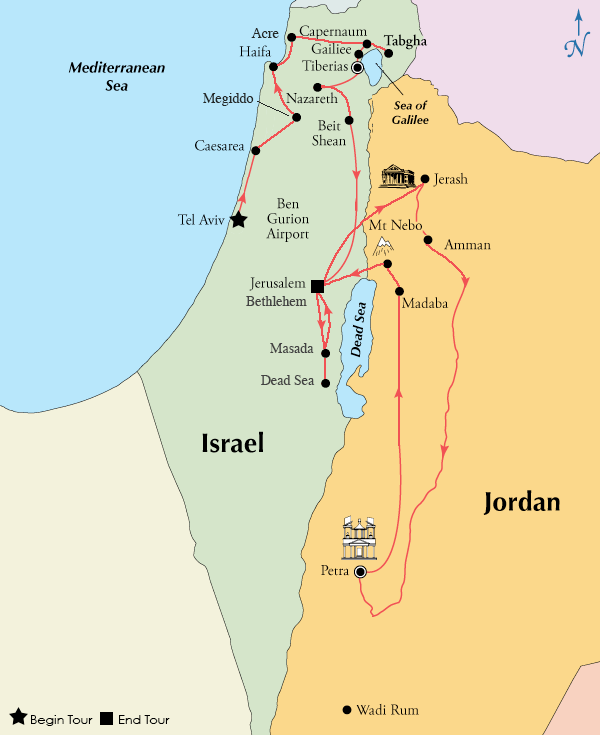 Masada
Masada
is an ancient fortification in the Southern District of Israel
situated on top of an isolated rock plateau on the eastern edge of
the Judaean Desert, overlooking the Dead Sea. Herod the Great built
palaces for himself on the mountain and fortified Masada between 37
and 31 BC. According to Josephus, the Siege of Masada by troops of
the Roman Empire towards the end of the First Jewish-Roman War ended
in the mass suicide of the 960 Jewish rebels and their families
hiding there.
Petra is a historical and archaeological city in the southern
Jordanian governorate of Ma'an that is famous for its rock-cut
architecture and water conduit system. Another name for Petra is the
Rose City due to the color of the stone out of which it is carved.
Established possibly as early as 312 BC as the capital city of the
Nabataeans,it is a symbol of Jordan, as well as Jordan's
most-visited tourist attraction. It lies on the slope of Jebel
al-Madhbah in a basin among the mountains which form the eastern
flank of Arabah, the large valley running from the Dead Sea to the
Gulf of Aqaba. Petra has been a UNESCO World Heritage Site since
1985.
Wadi Rum has been inhabited by many human cultures since prehistoric
times, with many cultures-including the Nabateans-leaving their mark
in the form of rock paintings, graffiti, and temples. In the West,
Wadi Rum may be best known for its connection with British officer
T. E. Lawrence, who passed through several times during the Arab
Revolt of 1917-18. In the 1980s one of the rock formations in Wadi
Rum was named "The Seven Pillars of Wisdom" after Lawrence's book
penned in the aftermath of the war, though the 'Seven Pillars'
referred to in the book have no connection with Rum.
Jerash is the site of the ruins of the Greco-Roman city of Gerasa,
also referred to as Antioch on the Golden River. Ancient Greek
inscriptions from the city as well as literary sources from both
Iamvichou and the Great Etymology establish the foundation of the
city as being by Alexander the Great or his general Perdiccas, who
settled aged Macedonian soldiers there. This took place during the
spring of 331 BC, when Alexander left Egypt, crossed Syria and then
went to Mesopotamia. Jerash is considered one of the most important
and best preserved Roman cities in the Near East.